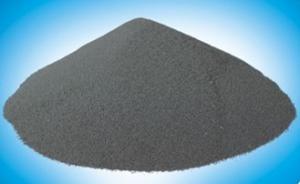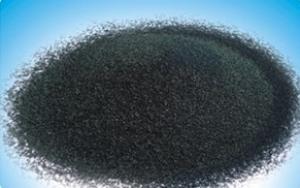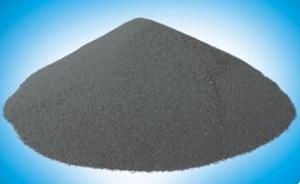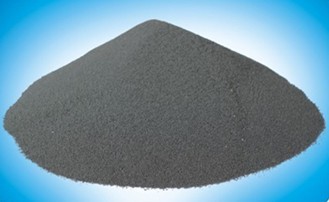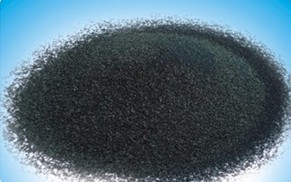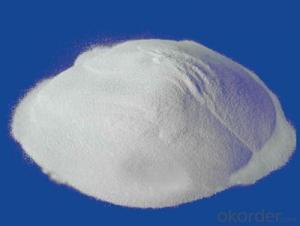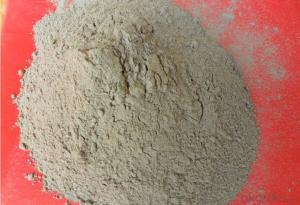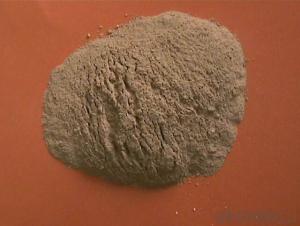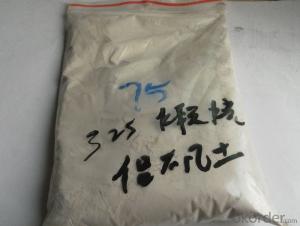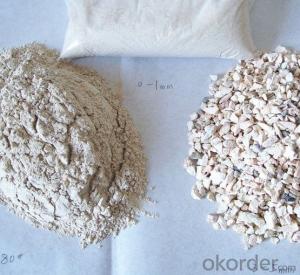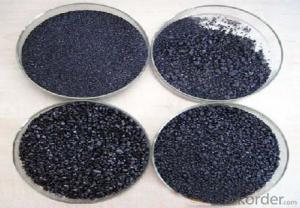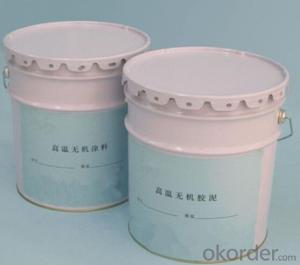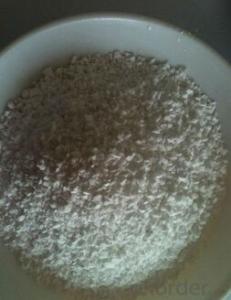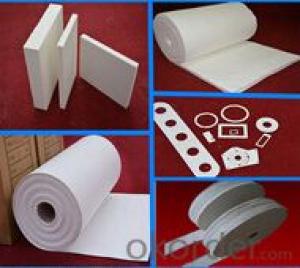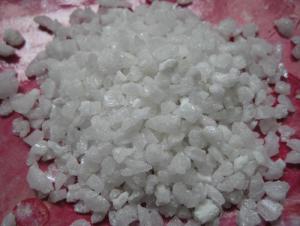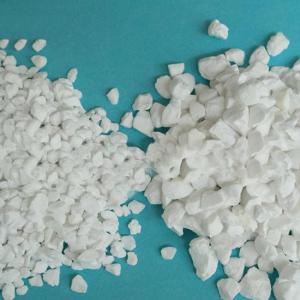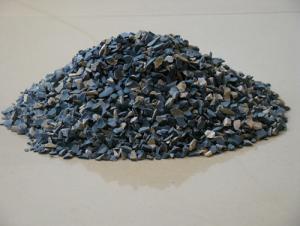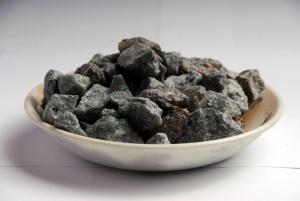Refractory Raw Materials - Molten Iron Insulation Agent
- Loading Port:
- China Main Port
- Payment Terms:
- TT OR LC
- Min Order Qty:
- -
- Supply Capability:
- -
OKorder Service Pledge
OKorder Financial Service
You Might Also Like
Molten iron insulation agent Product description The molten iron insulation agent is my company to cater to the needs of the market development of metallurgical products. The product effectively substitute the traditional use carbonization rice and other carbonaceous materials, solve the high, transportation agent water covered the defects in use and to appear in the heat loss, and easy to crusting, stick the furnace wall, hang slag etc, it is home to more than in normal use steel mill, and get good use effect and high reputation from the customers. Product features 1. Spread good performance and can even coverage of the iron liquid surface; 2. Strong heat insulation, heat preservation time long, iron temperature drop small; 3. Product ingredients stability, rare slag performance is good, use not crusting, not erosion bag wall, and turn packets clean, reduce the workload of qing bag; 4. Product alkalinity ?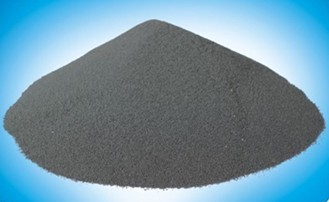
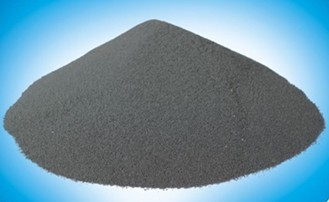
Into a | SiO2 CaO fixed C bulk melting point |
Refers to the standard | 10~18 10~18 30~45 <1150℃ <0.8 |
Usage and dosage
Molten iron by the bag, directly add to the molten iron liquid surface department, addition amount depends on the molten iron residence time 1 ~ 1.5 kg per ton steel according to choose.
- Q: Is refractory material harmful to human body?
- Part is harmful to human body, mainly refractory raw material, silica powder inhalation can cause lung tuberculosis, siliceous fiber on the human body does have great harm, in fact, like other inorganic fiber in the inhalation of the trachea or lung after the same harm to human
- Q: How much modulus is used as refractories material of sodium silicate.
- Storage and use are very convenient, especially for mechanized and the evenly refractory material and the sodium silicatemodulus is generally...2. transportation. The appearance of product is pure white. Instant powdered sodium silicate, also known as instant sodium metasilicate.4 to 3, in powder form, automation. in the range of 3, hydrated sodium silicate
- Q: What are the meanings of azs, 34% and ec in fused brick?
- The fused brick, also called zircon corundum brick, is shorted as AZS for three chemical components in Al2O3-ZrO2-SiO2 ternary diagram. I don't know the meaning of EC.
- Q: What are the models of bauxite with high alumina?
- China Ferrous Metal Industry Corporation released the industry standard of bauxite (YS / T78-94) in 1994. According to this standard, bauxite can be divided to sedimentary diaspore, stacked type diaspore and lateritic gibbsite. According to the chemical composition, it can be divided into nine trade marks as LK12-70, LK8-65, LK5- 60, LK3-53, LK15-60, LK11-55, LK8-50, LK7-50 and LK3-40. In addition to the provisions of chemical composition of bauxite, the standard also requires that the water of sedimentary diaspore shall not exceed 7% and water of stacked type diaspore and lateritic gibbsite shall not exceed 8%. Moreover, particle size of bauxite should be not greater than 150mm. Bauxite shall not be mixed with clay, limestone and other debris.
- Q: What is the material composition of the new fire-resistant coating?
- New fire-resistant coating generally consists of base material, dispersion media, flame retardants, fillers, additives (plasticizers, stabilizers, waterproofing agents, moisture, etc.). (1) Base material is the basis of the composition of the coating, and it is the main film-forming substance, playing a decisive role in coating performance . For fire-resistant coating, its base material must be capable of matching with the flame retardant to constitute an organic fireproofing system. The base material commonly employed at home and abroad includes inorganic and organic film-forming material. Inorganic film-forming materials include silicate. Si03, K2 Si03Na2 Si03), silica and phosphate [Al. (HPO.). ] ect. There are a wide range of organic film-forming substance, usually flame retardent organic synthetic resins, such as phenolic resins, halogenated alkyd resins, polyester, halogenated olefin resins (such as vinyl chloride resin), amino resin (melamine resin, urea resin, etc. ), tar-based resins, furan resins, heterocyclic resins (e.g., polyamide-imide, polyimide, etc.), organic elements resins (e.g. silicone resin), rubber (halogenated rubber such as chlorinated natural rubber) and so on. There are numerous latex taking water as solvent. www.hc3600.
- Q: Which kind of refractory floor is easy to use? ?
- Recommend: Yong Wei fireproof board Henan Yong Wei Anfang Co., Ltd., located in Qinbei industrial agglomeration area, Qinyang City, Henan Province, was founded in 1995. It strated from the initial one fire decorative plate production line. After years of development, it has become the biggest fireproof decorative board production base with 25 fireproof board production lines.
- Q: The principle of choosing fire-resistant material in Thermal Energy and Power Engineering equipment.
- What thermal equipment? The most simple principle is durable, low cost and with no environmental pollution.
- Q: What is the fireproofing requirements of external wall thermal insulation materials?
- External wall thermal insulation materials fire rating regulations, 1, the height of a building is greater than or equal to 100m , the combustion performance of insulation materials should be level A; 2, the height of a building is greater than or equal to 60m but less than 100m, the combustion performance of insulation materials should not be less than the level B2. When using level B2 thermal insulation material, every layer should set horizontal fire barrier zone 3,The height of building is be equal or greater than 24m but less than 60m, the combustion performance of thermal insulation material should not be less than the level B2. When using level B2 insulation material, each two-layer should set fire barrier zone ; 4, the height of building is less than 24m, the combustion performance of insulation materials should not be less than the level B2. Besides, when using level B2 thermal insulation material, each three-layer should set a horizontal fire barrier zone.
- Q: What are the specifications of refractory kilns ?
- There several points need to be noted ① selection of body material. The refractory lining of the front kilneye turns gelid and hot rapidly and frequently, so the temperature is in the range of 800 ℃ ~ 1250 ℃, allowing it to withstand wear of the cement clinker and corrosion of the cement base. The body material of castable refractory must be chosen according to its service conditions, in order to ensure that it is cheap and easy to use. ② the selection of admixture. Shapeless refractory materials are typical in-situ reaction refractories. Therefore choosing admixtures is very important and must ensure workability, baking performance, and excellent material properties. Admixture for Kiln refractory castable includes dispersants, accelerators, plasticizers, sintering agent, bulking agent and antidetonant. Materials of sintering agent are animate clay, zirconite, titanium dioxide and Peng compounds. Such substances produce a certain amount of mullite crystals, zircon phase, titanium aluminate crystal and inconsistent melting compounds (2Al2O3 ? B2O3), etc. under the operating temperature and in situ reaction. They are accompanied by volume expansion and microcracks, enabling it to compensate for the sintering shrinkage, so that the casting material can have sintering strength, corrosion resistance and good thermal shock resistance. In summary, the refractory castable material for the rotary kiln shall be determined in accordance with its service conditions. It is recommended that clients should also communicate with technical personnels and sales staff about some facts of the rotary kiln when buying it, so that they can get the satisfying rotary kiln.
- Q: What are the grades of refractory exterior wall thermal insulation materials?
- Classification of fire rating of extrior thermal insulation materials 1, According to national standard GB8624-97, the combustion performance of building materials are divided into the following grades A level: Incombustible building materials: Materials hardly burn. B1 class: Flame-retardant building materials: Flame-retardant material has good flame resistance. In case of fire in the air or at high temperature, it is difficult to catch fire and the fire will not spread quickly. And when the combustion source is removed, the burning will stop immediately. B2 Class: Combustible building materials: Combustible materials have a certain flame retardancy. In case of fire in the air or at high temperature, it will immediately burst into flames and it is easily to spread fire, such as wooden column, wooden roof truss, wooden beams and wooden stairs, etc. B3 level: Inflammable building materials: It has no flame retardant effect, and it is extremely inflammable, and the risk of fire is high. Classification of exterior wall thermal insulation materials according to fire rating: 1. Thermal insulation materials with A-level combustion performance Rock wool, glass wool, foam glass, foamed ceramic, foam cement, hole-closed perlite, etc. 2, Thermal insulation materials with B1-level combustion performance: Extruded polystyrene board (XPS) after special treatment / polyurethane (PU) after special treatment, phenolic aldehyde, gelatine powder polystyrene granule, and etc. 3. Thermal insulation materials with B2-level combustion performance: Molded polystyrene board (EPS), extruded polystyrene board (XPS), polyurethane (PU), polyethylene (PE), etc.
Send your message to us
Refractory Raw Materials - Molten Iron Insulation Agent
- Loading Port:
- China Main Port
- Payment Terms:
- TT OR LC
- Min Order Qty:
- -
- Supply Capability:
- -
OKorder Service Pledge
OKorder Financial Service
Similar products
Hot products
Hot Searches
Related keywords
